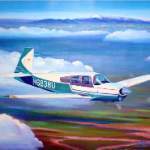Making Sense of Best Glide and Glide Ratio
-
Members Online
- 201Mooniac
- AndreiC
- Accurate Aero
- Scottknoll
- TCC
- rklems
- Hall Liu
- Yetti
- IFLYIFR
- Skyland
- Glenn
- Kelpro999
- Ron McBride
- redbaron1982
- TreetopMooney
- MoonFlyer68
- Ivan
- M Terry
- johnwheeler
- Rick Junkin
- anthonydesmet
- Parker_Woodruff
- donkaye, MCFI
- mooniac58
- Gerbil
- Guy123
- Jarerh
- 1980Mooney
- WilliamR
- pinkiedog64
- DanM20C


Recommended Posts